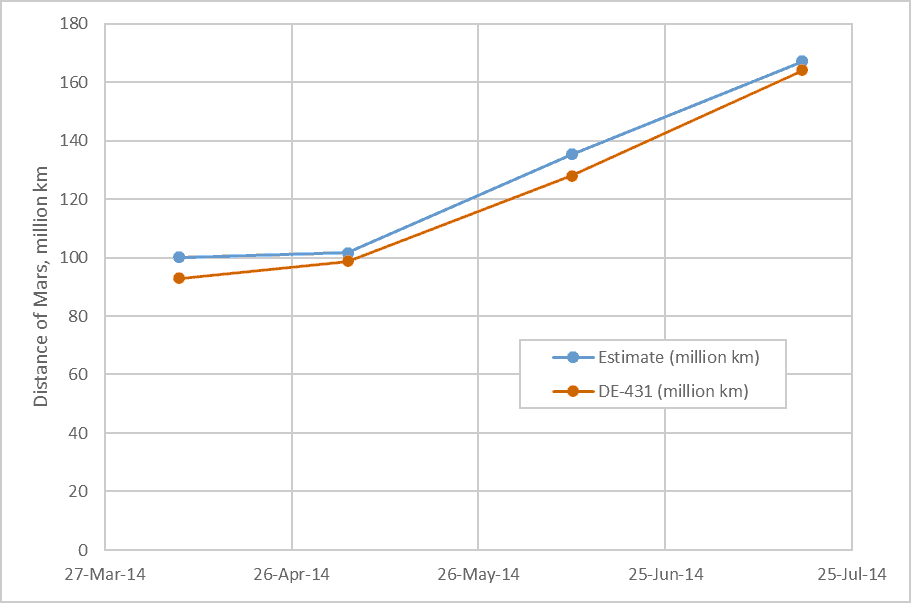
Orwell Astronomical Society (Ipswich)
Estimating The Distance To Mars, 01 April - 17 July 2014
Mars was at opposition on 08 April 2014, at a distance of 92.9 million km or 0.62 AU (figures from NASA JPL ephemeris DE-431). I set out to measure the distance of the planet as it receded from Earth in the following months. The approach I used was to image Mars, measure the size of the image on the computer screen, use this quantity to calculate the angular diameter of the planet, and then apply trigonometry to calculate its distance. I compared my estimates with figures from DE-431.
I used a 300 mm f5 Dobsonian reflector with Canon EOS 600D DSLR and 5x Powermate (Barlow lens). The use of the Powermate meant that the size of the image of Mars on the computer screen was large enough to be accurately measured. The relationship between the angular diameter of an object and its linear diameter on the computer screen is given by:
θ (arcsec) = image diameter (mm) * 206265 / f0 (mm),
where θ is the angular diameter of the object, f0 is the focal length of the instrument and the factor 206265 arises from conversion from radians to arcsec. Once the angular diameter has been determined, trigonometry gives the distance of the planet from the following formula:
D (km) = d (km) * f0 (mm) / image size (mm),
where D is the distance from Earth and d is the physical diameter of the planet (6792 km in the case of Mars).
I obtained four estimates of the distance of Mars over four months, April - July 2014, and this was sufficient to validate the accuracy of the method. The figure below plots the results, together with estimates of the geocentric distance of Mars from DE-431. My estimates are within 8% of the figures from DE-431 over the range, a surprisingly good result.
I expected that my estimates might give a low value for the distance of Mars, as its diameter would be over-estimated due to poor seeing, indicating that it was closer than in reality is the case. I anticipated that this effect might become more pronounced as the angular diameter of Mars decreased. During the period of observation, the angular diameter of Mars reduced from 14.0 to 8.4 arcsec. However, the results indicate that this did not affect the accuracy of estimates of distance.
Mike O'Mahony